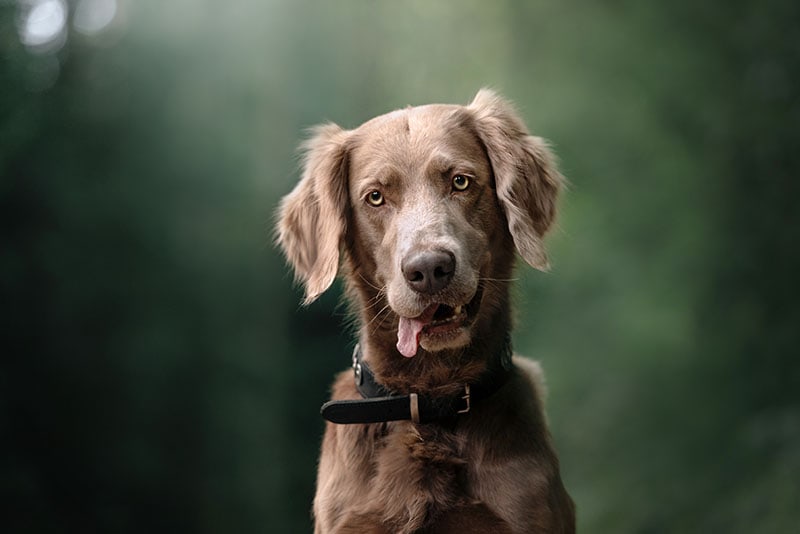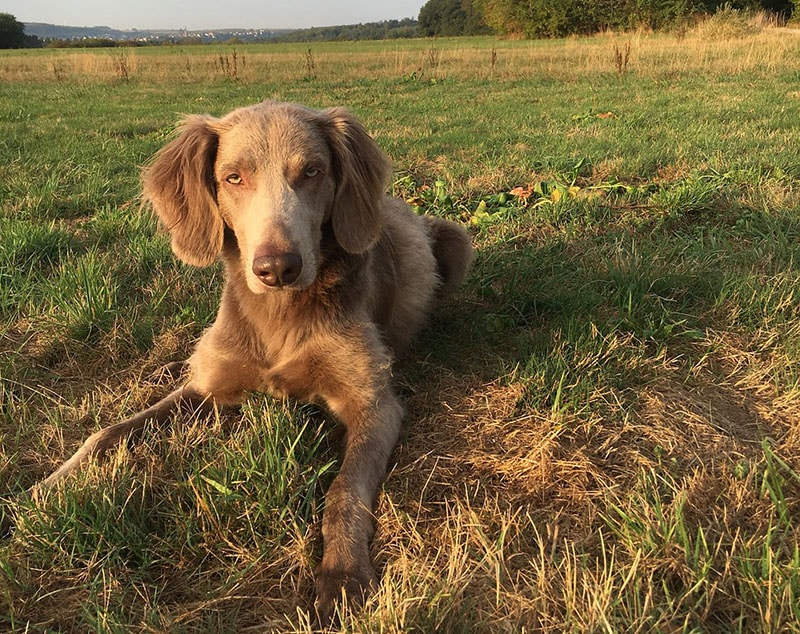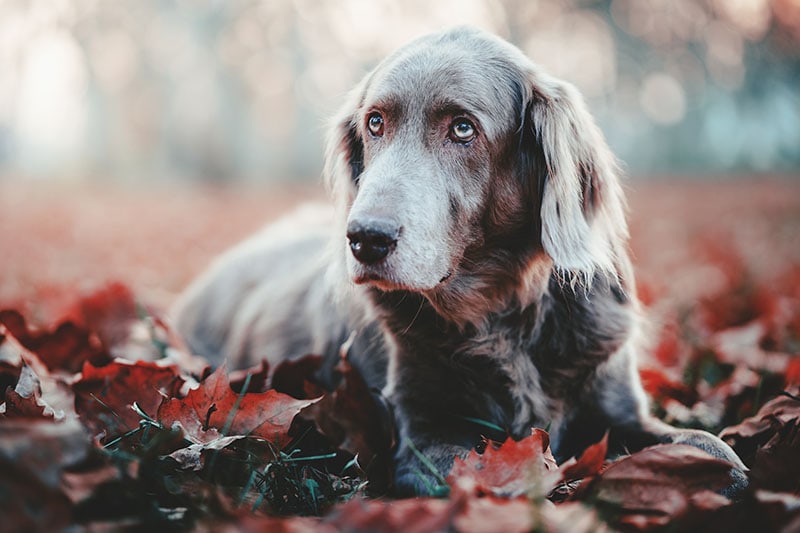Click to Skip Ahead
Nicknamed the Gray Ghost for its signature gray coat, the Weimaraner is typically known as a short-haired breed. This lanky, athletic hunting dog is versatile on the field but loves chilling at home at your side too. The Long-haired Weimaraner is the same in all the places that matter except their luxuriant gray-silver coat. Let’s learn some more about that and much more about this majestic German hound down below.
Breed Overview
Height:
12–18 inches
Weight:
55–95 pounds
Lifespan:
11–14 years
Colors:
Gray, blue, silver
Suitable for:
Experienced and active dog owners with access to a spacious outdoor area
Temperament:
Devoted, watchful, energetic, loving, eager to please
Weimaraners are a fairly rare dog breed, to begin with, and Long-haired Weimaraners are even rarer. Their blue-gray coats are gorgeous and unlike any other breed, and their intense loyalty makes them great family dogs for seasoned dog owners who can handle their stubborn streak.
Longhaired Weimaraner Breed Characteristics

The Earliest Records of Long-haired Weimaraner in History
The Weimaraner is a pretty young breed to have such an aristocratic look, with earliest records indicating they were bred from various hounds across central Europe to hunt game. They were great at chasing, flushing, and retrieving, and their boundless energy only helped. Mostly owned by nobles, the Weimaraner bloodline was coveted by huntsmen across central Europe.
The most notable patron of Weimaraners was Grand Duke Karl August, who imported different hounds from across the continent to develop a more refined and flexible hunting dog. In fact, the very name “Weimaraner” comes from the Weimar region where Duke August reigned because of his love for the breed.

How Long-haired Weimaraner Gained Popularity
The Weimaraner enjoyed a long life as a hunting dog but was threatened by the advent of WWI. It declined during the postwar years and eventually made its way to the US in the ‘30s or ‘40s. They became very popular among sportsmen and as family dogs, and their unique look was adored.
During this time the Long-haired Weimaraner was a lesser-known variety that was rare among a rare breed—more of a curiosity than anything. Today, the Long-haired Weimaraner is a highly sought-after breed that’s hard to find but makes a great companion once you pay the steep price to acquire one for yourself.
Formal Recognition of Long-haired Weimaraners
The Weimaraner was formally recognized by the AKC in 1943 after being smuggled out of Germany by some devotees of the breed. At this time, there were very few Long-haired Weimaraners to speak of, so the AKC never recognized them. However, the Long-haired Weimaraners have been formally recognized by other kennel clubs across the globe, including the UKC and the CKC.

Top 7 Unique Facts About Long-haired Weimaraners
1. Puppies start off tiger-striped
Weimaraner puppies are born with tiger-like stripes that fade away just a few days after birth.
2. Barn Hunting Champions
The very first championship for the sport of barn hunting was won by a Weimaraner named Lexi.
3. They’re speedy
Weimaraners are one of the fastest dogs—they’ve been recorded at speeds up to 35 mph!
4. Weimaraners have adorable habits
They have a unique stimming-like habit called “nooking” where they gently suck and knead on toys or bedding in their home.
5. Genetic matter for long-coats
Long-haired Weimaraners are typically only born when two parents with the same recessive long-haired gene breed.
6. Their heads are shaped differently than other dogs
Weimaraners have small, bony hornlike “trumpets” on the sides of their heads.
7. This breed has famous ties!
US President Dwight Eisenhower owned a very photogenic Weimaraner named Heidi, who according to urban legend, is the only presidential dog ever banned from the White House.


Does a Long-haired Weimaraner Make a Good Pet?
Absolutely, but ideally, we recommend a Long-haired Weimaraner for an experienced dog owner who knows how to handle their explosive energy and bright intelligence. They’re gentle and tolerant of small kids and get along well with other dogs too, but they don’t typically get along well with cats. Prey animals like rabbits are a definite no-go as well. Other than that, we must emphasize that Long-haired Weimaraners are very high-energy dogs, so you need to make sure they get at least 1 to 2 hours of exercise a day.
Conclusion
Long-haired Weimaraners are hard to come by unless you go looking for a breeder that specializes in them, although they’re technically not AKC-recognized. This aristocratic Gray Ghost is one of the most striking and loyal dogs you can have, and their nose is unmatched.
Featured Image Credit: David_Chrastek, Shutterstock










